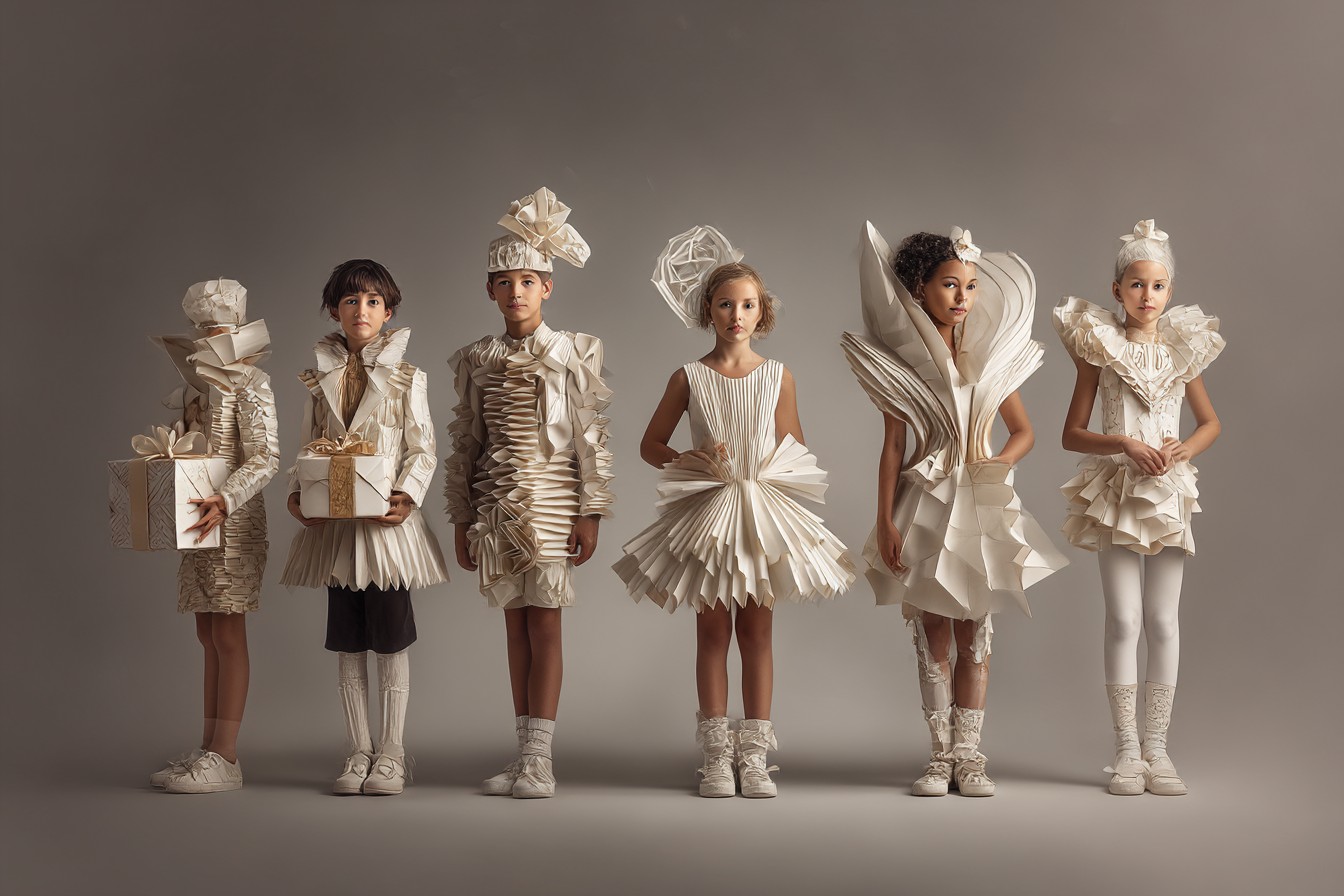I was wrapping presents last night for my nephew’s birthday when I had one of those moments—you know, the kind where you suddenly question everything you’re doing. There I was, surrounded by four meticulously wrapped packages, color-coordinated tissue paper, and handmade gift tags (yes, I make my own tags, it’s a whole thing), when Jake walked in and just stared at me.
“Isn’t the party tomorrow?” he asked, eyebrows raised.
“Yeah, why?”
“Didn’t we agree on the five gift rule thing for kids? One, two, three, four…” He pointed at each package. “I’m counting four here, Liv.”
I rolled my eyes. “It’s technically three gifts and a card with money.”
Jake just laughed and shook his head. “Right. Totally different.”
He had a point, though. I’ve been preaching about the five gift rule for years—both in my column and to anyone who’ll listen at family gatherings. But somewhere between theory and practice, things get… complicated. Especially when you’re someone who expresses love through carefully chosen presents. Ahem. Not that I know anyone like that.
So here’s my confession: I’m not always perfect at following my own gift-giving rules. Shocking, I know. But over time, I’ve learned that while rules provide useful structure, they need breathing room—particularly when it comes to kids and celebrations.
For those unfamiliar, the classic “five gift rule” (sometimes called the four gift rule, depending on who you ask) suggests limiting children’s presents to: something they want, something they need, something to wear, and something to read. Simple, balanced, and practical—at least on paper.
I first encountered this concept seven years ago while visiting my college roommate Dana and her two kids. Their playroom looked like a Toys ‘R’ Us warehouse after an earthquake—plastic gadgets everywhere, half the toys still in packaging, and Dana stepping on Lego pieces every three minutes while muttering curses under her breath.
“We’ve created monsters,” she sighed, nursing her Lego-wounded foot. “They get so much stuff they don’t even care about anything for more than five minutes.”
That Christmas, Dana implemented the four gift rule with military precision. Each child received exactly four presents, each falling neatly into one of the categories. She expected resistance; instead, she found her kids actually played more meaningfully with their fewer, more thoughtful gifts. When she told me about it, I was instantly converted to the gospel of gift limitation. It made perfect sense! Structure! Boundaries! A framework that prevents excess while ensuring thoughtfulness!
Oh, how passionate we get about parenting philosophies before we’re actually in the thick of it.
My sister Jen had her first baby about four years ago, making me an aunt to little Max. As the self-proclaimed “gift guru” of the family, I announced at the baby shower that I would be implementing the four gift rule for all future birthdays and holidays. My sister nodded politely while unwrapping the SEVEN baby outfits I’d bought. (They were all so cute though! And different sizes for different seasons! And one had little dinosaurs that I couldn’t resist! See the problem?)
Max’s first birthday was my inaugural attempt. I stuck to the formula religiously:
Want: A wooden shape sorter (educational but fun!)
Need: Those adorable toddler utensils with the fat handles
Wear: A sweater with elbow patches that made him look like a tiny professor
Read: A set of board books about animals
I was so proud of my restraint. I wrapped each gift individually, labeled them according to category, and even prepared a little speech about how this thoughtful approach would help Max grow up valuing quality over quantity.
Then I arrived at the party and promptly realized I’d forgotten something crucial: one-year-olds don’t care about philosophical approaches to consumerism. Max spent more time playing with the wrapping paper than the carefully selected wooden toy. The sweater was immediately smeared with cake frosting. The books became teething devices.
My sister was appreciative but looked at me with the gentle pity reserved for childless people with strong opinions about parenting. “It’s a nice idea,” she said, diplomatically. “But maybe we can be a bit flexible?”
Flexibility. Not exactly my strong suit when it comes to gift-giving frameworks.
By Max’s second birthday, I’d softened a bit. I still brought four main gifts that fit the categories, but I also brought bubbles—because what two-year-old doesn’t love bubbles? They’re technically not a want, need, wear, or read. They’re just… bubbles. Joyful, simple, uncategorizable bubbles.
And that’s when it clicked for me. The framework isn’t meant to be a rigid law, but rather a helpful guideline that prevents excessive consumerism while ensuring a balanced approach. Some of my most favorite childhood gifts wouldn’t have fit neatly into any of these categories—like the magnifying glass my grandfather gave me that led to an entire summer of backyard insect investigations.
Over the years, I’ve adapted my approach to what I now call the “flexible five gift philosophy.” Here’s how it works in my world:
First, I absolutely maintain a limit—whether it’s four, five, or whatever number feels appropriate for your family’s values and budget. The specific number matters less than having one. Without a cap, it’s too easy to keep adding “just one more thing” until you’ve gone completely overboard. Trust me on this. I once brought nine separate gifts to my friend’s daughter’s birthday before I implemented this rule. NINE. Her mother still brings it up.
Second, I use the traditional categories as starting points rather than strict requirements. “Something they want” and “something they need” are pretty universal and usually stay in the mix. But sometimes “something to wear” might become “something for a hobby” if the child is passionate about art or sports. The categories can evolve based on the kid’s interests and developmental stage.
Third—and this is crucial—I’ve added what I call the “wild card” category. This is for those gifts that don’t fit neatly elsewhere but feel meaningful. For Max’s fourth birthday, his wild card was a butterfly net because he’d become obsessed with insects (clearly following in my footsteps with the magnifying glass). It wasn’t something he specifically asked for, or needed, or could wear or read—but it aligned perfectly with his current passions.
Fourth, I consider experiences alongside physical presents. Sometimes the “something they want” isn’t a thing at all, but tickets to the aquarium or a special day out. These experience gifts often create more lasting memories than another plastic toy, though they’re admittedly harder to wrap. I usually make a little certificate or clue hunt leading to the reveal.
Finally, I’ve learned to coordinate with other family members. The five gift rule works best when everyone’s on board, or at least aware. Otherwise, you’ll carefully curate your four perfect presents only to watch as Grandma shows up with fifteen packages and a pony. (I’m only slightly exaggerating about my mother’s gift-giving enthusiasm. Sorry, Mom, but we both know it’s true.)
The most important thing I’ve learned, though, is that the spirit behind the rule matters more than perfect execution. Last Christmas, I had everything perfectly planned for Max—now five and obsessed with outer space. I had his want (a telescope), need (new winter boots), wear (astronaut pajamas), and read (a cosmic encyclopedia appropriate for kindergarteners). All bases covered!
Then, two days before Christmas, while we were baking cookies, he casually mentioned that what he really, REALLY wanted was a specific stuffed alien from his favorite show that made weird gurgling noises when you squeezed it.
My inner gift perfectionist panicked. The categories were already filled! The presents were wrapped! The balance was perfect! Adding something would throw off the whole system!
But then I remembered what this is actually about: showing the children in our lives that we see them, we hear them, and we care about their joy. Sometimes that means sticking to helpful boundaries around gift-giving, and sometimes it means making room for a gurgling alien that breaks all the rules.
For what it’s worth, that ridiculous alien (which I found after calling four different stores in a mild panic) is still his favorite possession six months later. He sleeps with it every night. The telescope gets used occasionally. The boots were outgrown in three months.
So now when people ask me about the five gift rule, I tell them it’s less about rigidly following categories and more about finding that sweet spot between thoughtful restraint and genuine delight. It’s about creating a gift experience that shows abundance without excess, thoughtfulness without overthinking, and joy without the hangover of too much stuff.
This framework has saved my sanity, my budget, and my storage space. It’s helped me become a more intentional gift-giver, focusing on quality over quantity. But most importantly, it’s reminded me that the best gift we can give children isn’t found in any wrapped package—it’s showing them we pay attention to who they really are.
Now if you’ll excuse me, I need to go rewrap these birthday gifts for my nephew. Jake was right—four is definitely one too many. Unless… maybe the Captain America socks could count as the “wear” instead of the superhero t-shirt, which could then be reclassified as the wild card? Or maybe I should just put the socks and shirt together as one gift?
See what I mean about flexibility? It’s a journey, not a destination. And honestly, half the fun is figuring it out as we go along.





